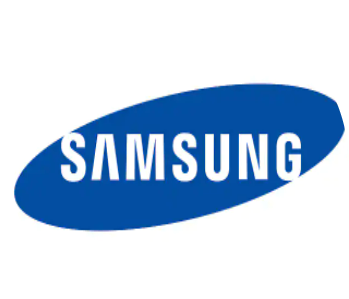
Cameron Murphy
Apr 14, 2022 15:26

Although many businesses are involved in producing 5G chipsets, just four are now doing extraordinarily well.
However, since the 5G chipset industry is still maturing, other businesses have a lot of room to expand. Some semiconductor firms' positions in the 5G chipset market may alter dramatically.
Because the technology had not been commercialized in 2018, the worldwide 5G chipset market was estimated to grow from USD 6.13 million in 2020 to USD 159.31 million in 2026. Over the projected period, the market is estimated to grow at an annual rate of 87.8%. (2021-2026).
With 5G networks on the horizon, smartphone OEM telecom players quickly prepare for the transition. 5G networks, which depend on denser arrays of tiny antennas to enable ultra-high data rates, are being upgraded by telecom service providers all over the globe.
There has also been an increase in high-quality video and audio information. Mobile devices have surpassed desktop computers as the primary medium for viewing internet media, such as live video streaming, file sharing, audio streaming, and running business apps, among other things. HOWEVER, current LTE technologies do not fully enable all of these uses. This has been a significant driver of 5G adoption since it provides higher internet speeds and coverage and lower latency.
Due to the wide range of services, from extreme broadband to massive machine-type communications (mMTC) and ultra-reliable MTC, 5G is likely to add numerous levels of complexity to the spectrum. Depending on its needs, each application necessitates its place in the range.
As more nations develop the infrastructure needed to enable 5G, and as demand for faster data transfers and dependence on cloud technology grows, demand for 5G chipsets is likely to soar, resulting in a massive market opportunity.
Industrial automation is expected to account for a sizable portion of the market.
Manufacturing firms all around the globe are under tremendous strain as a result of shorter product and company lifecycles and high business instability. As the workforce ages, profit margins are squeezed, and components become more diverse and challenging to make.
In combination with the 5G network, the Internet of Things (IoT) is expected to improve the aforementioned industrial automation business difficulties. Manufacturers may use the improved network to create smart factories and develop technologies like artificial intelligence (AI), machine learning, augmented reality, and automation.
Smart factories will likely have several sensors to monitor different elements of the working environment in the future. The 5G network is expected to provide smart factories with low latency, wireless flexibility, and high capacity performance to overcome obstacles in the manufacturing environment. Consequently, chipset makers will have a lot of opportunities to invest in industrial automation devices.
In industrial automation, 5G catalyzes new business models. The wireless business, in particular, must interact with future clients and users.
Twelve businesses are working on 5G chipsets, but just four companies, Qualcomm, Samsung, Huawei, and MediaTek, are now dominating the industry.
Let's take a look at the activities of these four guys to learn more about them.

In February 2019, Qualcomm Technologies and a consortium of the world's largest mobile network operators, including AT&T, Verizon, China Mobile, Deutsche Telekom, NTT DoCoMo, and SK Telecom, announced how far they had progressed in fulfilling the 5G vision.
The Qualcomm Snapdragon X50 5G modem will be at the core of the mobile test devices to determine the performance of these developing networks as the businesses prepare to conduct the first testing of standards-compliant mobile 5G NR networks. Following the establishment of 5G standards by the 3GPP in 2016, Qualcomm began developing the next wave of 5G NR technologies, which would pave the way for the subsequent 5G NR standard releases. Qualcomm presented three of these 5G NR growth zones at MWC 2018.
Qualcomm Research began designing the new 5G wireless air interface well before the 3GPP standardization process began. Qualcomm Research showed millimeter wave, a crucial 5G technological enabler for these extreme mobile broadband experiences, in a live presentation to industry analysts (mmWave).
Qualcomm is also working on the new 5G NR unified air interface's design and standardization.
Qualcomm has had tremendous success in the 5G chipset industry so far. Its 5G chipset family includes more than ten processors for smartphones, laptops, wearables, and other devices.
Qualcomm paid $2.4 billion for CSR in 2015. CSR was a renowned fabless supplier of end-to-end semiconductor and software solutions for the IoE and automotive markets. Qualcomm would be able to provide a compelling portfolio of new products for a vast number of clients via CSR in the Internet of Things and automotive, both of which are major growth areas for Qualcomm.
In October 2016, Qualcomm announced its intention to buy NXP Semiconductors for $47 billion.
Antitrust authorities in the United States authorized the acquisition in April 2017, although vital standard-essential patents were omitted to get the deal approved. During the NXP merger, Broadcom made a $103 billion bid to buy Qualcomm, which Qualcomm turned down.
Qualcomm paid $1.4 billion to buy Nuvia, a world-class CPU and technology design business, in 2021. Qualcomm's next-generation CPUs for smartphones, laptops, and other intelligent devices might benefit from Nuvia's expertise. The corporation recognizes the value of 5G and is willing to pay a premium for companies with exceptional capabilities.
Qualcomm said on October 24, 2019, that it had established a $200 million venture capital fund to invest in startups that want to employ 5G technology in devices other than smartphones.

Samsung is actively involved in critical global 5G research initiatives, including membership on the Steering Board of European 5G PPP projects under Horizon 2020, as well as coordination and leadership of the vast industry-led 5G PPP mmMAGIC consortium, 5G Innovation Centre (5GIC) in the United Kingdom, NYU Wireless Center in the United States, Giga KOREA project, and Chinese 836 project.
Various relationships with industrial partners and academics are being led by the firm all around the globe. As a full-time member of the 5G PPP Infrastructure Association, an executive board member of the 5G Forum in Korea, and the head of the vision sub-working group for Future IMT (5G) in ITU-R WP5D, Samsung has played a vital role.
Samsung only made one purchase that has anything to do with semiconductors. Samsung purchased Nanoradio, a Swedish wireless chip maker, in 2012 to improve the WiFi performance of its smartphones. The purchase makes sense since the smartphone industry was exploding at the time, and WiFi availability and connection were critical for smartphone makers.
Smartphones, tablets, mobile gaming terminals, portable multimedia players, digital cameras, and e-readers employ nano radio chips. Because Samsung had items in most categories at the time, the purchase was a strong match for the corporation.
Samsung Group said in 2018 that it would spend $22 billion in growth sectors such as artificial intelligence and 5G technologies over the next three years. This would be part of Samsung's total $161 billion investment plans, including capital expenditures and R&D. Samsung said that the majority of the funds would be spent in South Korea.
Samsung Group, South Korea's most enormous corporation, plans to spend nearly 25 trillion Korean won ($22 billion) in new growth sectors over the next three years, led by Samsung Electronics.
Artificial intelligence (AI), fifth-generation mobile network technologies, electrical components for future autos, and biopharmaceuticals would all get funding.
Samsung will increase the number of researchers at its worldwide AI centers in the United Kingdom, Canada, Russia, the United States, and South Korea to 1,000 to develop its AI capabilities.
Samsung Electronics is the world's top smartphone manufacturer, but it also has a robust semiconductor sector, supplying chips to firms like Apple.
The company said it expected to spend a total of 180 trillion won ($161 billion) on its semiconductors and displays divisions over the next three years, which would comprise capital expenditures and research and development. The majority of the investment — around 130 trillion won (US$114.4 billion) — would be spent in South Korea, according to the business, which did not provide more details.
In the aftermath of the COVID-19 controversy, Samsung said in April 2020 that it might postpone or reduce its investment in 5G technologies.

R&D employs around 96,000 Huawei people, or 49% of the total workforce, and Huawei has 85,000 patents in its portfolio as of 2019. It's hardly unexpected for a corporation that spent 15.3 percent of its sales, or USD 17 billion, on R&D last year. As of early 2017, China had 10% of the 1450 patients required for 5G networks, the bulk of which belonged to Huawei and ZTE.
The business aims to incorporate AI into 5G, which they believe is a far more critical part of Huawei's 5G plan. Huawei also intends to provide a comprehensive spectrum of commercial Huawei equipment, including wireless access networks, core networks, and devices.
The scope of Huawei's 2019 Annual Report is mind-boggling, revealing a firm unfazed by a slew of challenges. Huawei stands out in the technological world for its leadership in corporate 5G, cloud, and AI. One can't help but notice its continuous success in smartphone design and market dominance.
Huawei's 5G chipsets are used in its devices.
Huawei Technologies has acquired nine companies as of now, but none of the acquisitions is related to semiconductors.
Huawei has consistently spent more than 10% of its sales on research and development. Ren Zhengfei, Huawei's CEO and founder, said the firm "plans to increase its research and development spending this year by $5.8 billion to more than $20 billion."
Huawei spent more than US$600 million on 5G technology development between 2009 and 2013. Following this, Huawei spent over US$1.4 billion on 5G product development in 2017 and 2018.

MediaTek has been working on 5G research and development for the last eight years. They have an R&D facility in Finland in addition to the headquarters' R&D center (the homeland of Nokia). This research and development facility is involved in developing 5G and other cutting-edge wireless technologies.
It also develops communication technologies and conducts testing in collaboration with European telecommunication clients. It works with the Finnish Research and Development Institute, academic institutions, and Nokia. MediaTek has a dedicated 6G R&D team in Finland, which is expected to develop to be a significant factor in the company's future terminal chip growth.
The corporation also invests in research and development regularly. In 2019, it spent NT$63 billion on research and development, placing it first among Taiwan's publicly traded corporations. The company's long-term commitment to technology has also been recognized worldwide. In 2008, they published 11 papers at the ISSCC (International Solid-State Circuits Symposium), putting them in the top three in the world for the number of papers published.
In comparison to the other three leading players, Mediatek's 5G chipset family is massive:
Patents are a clear reflection of a company's creativity and R&D activities. With nearly 9,000 patents, MediaTek's patent strategy for 2018 continues to address both number and quality. In the Digital Communication sector of the European Patent Office, Mediatek has been rated the third-biggest patent filer at the Taiwan Intellectual Property Office (TIPO) and the 25th greatest worldwide patent filer (EPO).
In 2018, Mediatek received 1,731 new patents, 574 issued in the United States. When comparing the number of US patents obtained in 2017 to the number of US patents received in 2018, the number of US patents received in 2018 rose (398; ranking among the top 100 global patent filers).
Inprocomm, a wireless semiconductor design business that produces 802.11a, b, and a/g chips, was bought by MediaTek in 2005.
MediaTek announced its plan to purchase Analog Devices' cellular radio and baseband chipset operations for US$350 million on September 10, 2007. The purchase was completed on January 11, 2008.
MediaTek bought Ralink Technology Corporation on May 5, 2011, obtaining products and experience in WiFi technology for mobile and non-mobile applications and wired DSL and Ethernet connections.
MediaTek purchased Coresonic, a worldwide provider of digital signal processing equipment located in Linköping, Sweden, on April 11, 2012. In Europe, Coresonic became a wholly-owned subsidiary of MediaTek.
MediaTek bought MStar Semiconductor in August 2021. MStar is a circuit design business specializing in display IC products and mixed-mode ASIC technology solutions.
MediaTek bought Richtek Technology for $909 million on September 18, 2015. Richtek Tech specializes in analog integrated circuit design, testing, manufacturing, and distribution (ICs).
Mediatek launched a $300 million venture fund in 2015 to invest in entrepreneurs worldwide.
MediaTek Ventures is MediaTek's strategic investment arm, investing in businesses throughout Greater China, Europe, Japan, and North America.
The business is looking for early-stage startups in the semiconductor, system and device, internet infrastructure, and information technology industries to invest in.

Tsinghua Unigroup acquired Spreadtrum and RDA, two of China's top three-chip design businesses, and became one of the market's most influential players. Tsinghua Unigroup merged Spreadtrum and RDA into UNISOC in 2016 to integrate mobile chip technologies and increase the firm's autonomous R&D capabilities.
Unison, known initially as Spreadtrum, was a publicly traded corporation on the NASDAQ until July 2013, when it agreed to be acquired by Tsinghua Unigroup for $1.78 billion. Intel bought a 20% investment in Spreadtrum & RDA for $1.5 billion in 2014, and during MWC 2018, Intel and Spreadtrum extended their partnership to include 5G modem development. However, because of the US-China trade war and the market outlook, Intel declared in February 2019 that it would no longer pursue this relationship.
Samsung, Unisoc's main 3G client, changed its 4G sourcing to Qualcomm and primarily in-house. Spreadtrum's 4G market position suffered as a result of this. The firm has had some success with 4G feature phones, but its performance in 4G smartphones has been disappointing.
Unison's collaboration with Intel didn't work out either. In a few of the chips, Unisoc utilized Intel's x86 CPUs and Intel's fabs to build them. However, Intel's plan to promote x86 technology in cellphones with the support of Unisoc's strong foothold in developing regions did not come to fruition. This is due to Intel's poor progress in moving forward with its x86-based smartphone CPU roadmap.
Intel had to withdraw from the smartphone applications processor industry in 2016 after abandoning its integrated chip project. Intel had hoped that a relationship with Unisoc would help it spread its 5G modem technology to smartphones. However, the most recent development shows that Intel and Unisoc would compete in 5G cellphones independently. In 2020, Unisoc hoped to acquire a slice of China's 5G pie.
Tsinghua Unigroup has backed Unisoc financially. Future development opportunities for the corporation include AI, 5G, and IoT. Tsinghua University claims to have significant plans for wireless.
The chipmaker has recently been active on a worldwide scale, establishing contracts with upstream and downstream partners and companies in related industries. It signed a strategic agreement with American test equipment company Keysight in January 2019. A few months later, it announced a collaboration with Imagination, a British intellectual property (IP) licensing agency, on the IMG Series3NX, a brand-new neural network accelerator.
State officials are attempting to develop new pathways to public finance for high-tech-driven firms as China moves toward semiconductor self-sufficiency by lavishly investing in young domestic chipmakers. One of the most recent developments, the Shanghai Stock Exchange-based Star Market, has aided several enterprises in the field in increasing their financial resources.
On March 17, 2020, UNISOC secured CNY 2.25 billion (USD 320 million) in Series B funding from the China National Integrated Circuit Industry Investment Fund, often known as the 'Big Fund.'
According to reports, UNISOC is also planning a public offering on the new market. Combined with an organizational structure overhaul, it has begun an equity optimization initiative. The corporation, which has already hopped on the 5G bandwagon, will have additional prospects due to the next generation of wireless technology (5G) infrastructure.
The financing comes on the heels of the company's first mobile application System-on-a-Chip (SoC) processor with an integrated 5G modem, the UNISOC T7520. Surprisingly, the chipmaker has focused chiefly on developing low-cost chipsets for low-cost cellphones. For example, in 2018, it formed a relationship with Mobicel, a South African phone manufacturer. The two companies have agreed to produce a new device that will be manufactured and sold in the United States.
Since founding in 2001, the company has grown to over 4500 employees, with over 90% of employees actively involved in the research and development process.

Apr 13, 2022 17:25

Apr 14, 2022 16:56